In the last few years, the Baltic Environmental Forum Lithuania carried out the first translocations of aquatic warbler chicks to test the method with the species. Translocation proved to work better than scientists expected, therefore, the nature conservationists started to think about the next stage – to restore the extinct population. It was decided to be implemented in Pomerania region – on the border between Poland and Germany.
The experience from Poland
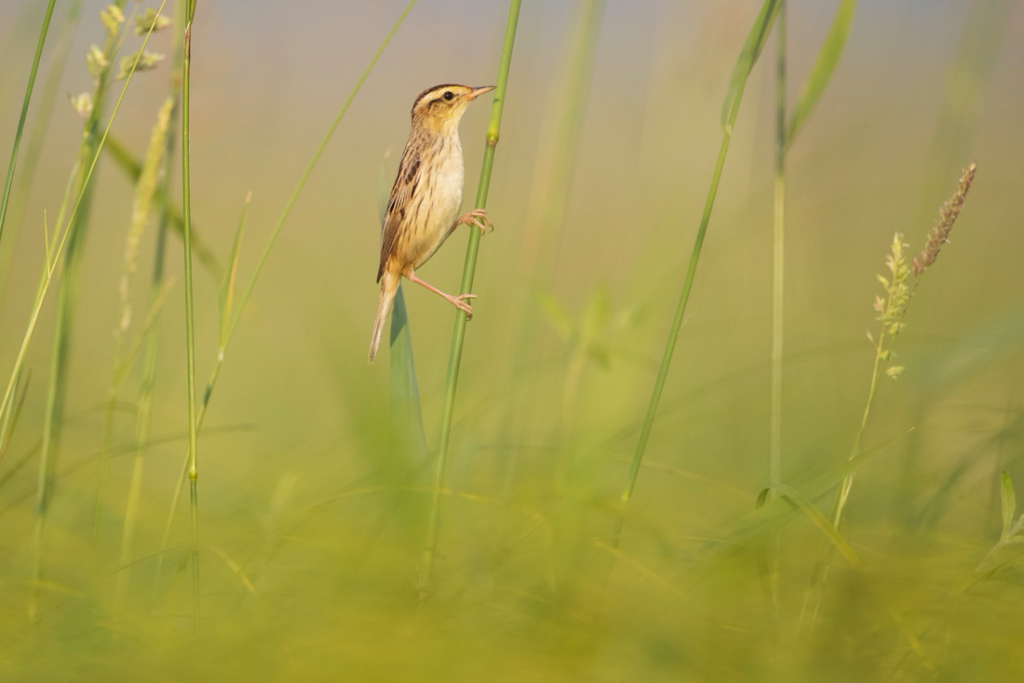 In the rays of the setting sun, softly wrapping around the clumps of sedges and gliding on their leaves, a small bird climbs onto a shoot protruding above the peat bog. In decisive, slightly nervous movements, it holds on to the stem with its long legs and assumes a stretched position. It is yellow-brown, with a fairly light belly and breast that are striking in binocular lenses. The characteristic head plumage pattern identifies the aquatic warbler, and the song echoing over the swamp identifies that it is male. In the Lower Biebrza Basin, in the Ławki swamp, there are many of them, and the songs of individuals are simultaneous. This is one of the few places in Poland where Aquatic Warblers still occur in large numbers, build nests, and breed. The eastern part of the country – the Biebrza Valley, Polesie National Park, and peat bogs near Chełm are the most important aquatic warbler refuges in Poland and a few of the most important in the world.
In the rays of the setting sun, softly wrapping around the clumps of sedges and gliding on their leaves, a small bird climbs onto a shoot protruding above the peat bog. In decisive, slightly nervous movements, it holds on to the stem with its long legs and assumes a stretched position. It is yellow-brown, with a fairly light belly and breast that are striking in binocular lenses. The characteristic head plumage pattern identifies the aquatic warbler, and the song echoing over the swamp identifies that it is male. In the Lower Biebrza Basin, in the Ławki swamp, there are many of them, and the songs of individuals are simultaneous. This is one of the few places in Poland where Aquatic Warblers still occur in large numbers, build nests, and breed. The eastern part of the country – the Biebrza Valley, Polesie National Park, and peat bogs near Chełm are the most important aquatic warbler refuges in Poland and a few of the most important in the world.
 Not so long ago, only about 40-50 years ago, the same was true in West Pomerania, the Lower Oder Valley, the Swina Delta, and the neighbouring rivers in north-eastern Germany. However, economic, political, and agricultural changes have meant that wet, extensively used meadows suitable for these birds have disappeared. The Aquatic Warbler is a stenotopic species, i.e. it has narrow criteria in terms of place of reproduction and residence. With the disappearance of the habitat, Aquatic Warblers have, therefore, also disappeared. The population has drastically decreased, from hundreds of male songbirds to a few, scattered on the best sites. Despite the restoration of suitable conditions in many places (also on OTOP land, where a community nature reserve has been run since the 1990s), the population has not been able to recover. Meanwhile, in the last few years, Baltic Environmental Forum (BEF) Lithuania carried out the first-ever translocations of Aquatic Warbler chicks to protect the species and test the method of translocation. After successful first round of translocations, the second stage was agreed to be done in Poland. The source of nestlings would be the almost boundless Biebrza Marshes, and the destination – Western Pomerania (Rozwarówo marshes). The partner in Poland is Polish Society for the Protection of Birds (OTOP).
Not so long ago, only about 40-50 years ago, the same was true in West Pomerania, the Lower Oder Valley, the Swina Delta, and the neighbouring rivers in north-eastern Germany. However, economic, political, and agricultural changes have meant that wet, extensively used meadows suitable for these birds have disappeared. The Aquatic Warbler is a stenotopic species, i.e. it has narrow criteria in terms of place of reproduction and residence. With the disappearance of the habitat, Aquatic Warblers have, therefore, also disappeared. The population has drastically decreased, from hundreds of male songbirds to a few, scattered on the best sites. Despite the restoration of suitable conditions in many places (also on OTOP land, where a community nature reserve has been run since the 1990s), the population has not been able to recover. Meanwhile, in the last few years, Baltic Environmental Forum (BEF) Lithuania carried out the first-ever translocations of Aquatic Warbler chicks to protect the species and test the method of translocation. After successful first round of translocations, the second stage was agreed to be done in Poland. The source of nestlings would be the almost boundless Biebrza Marshes, and the destination – Western Pomerania (Rozwarówo marshes). The partner in Poland is Polish Society for the Protection of Birds (OTOP).
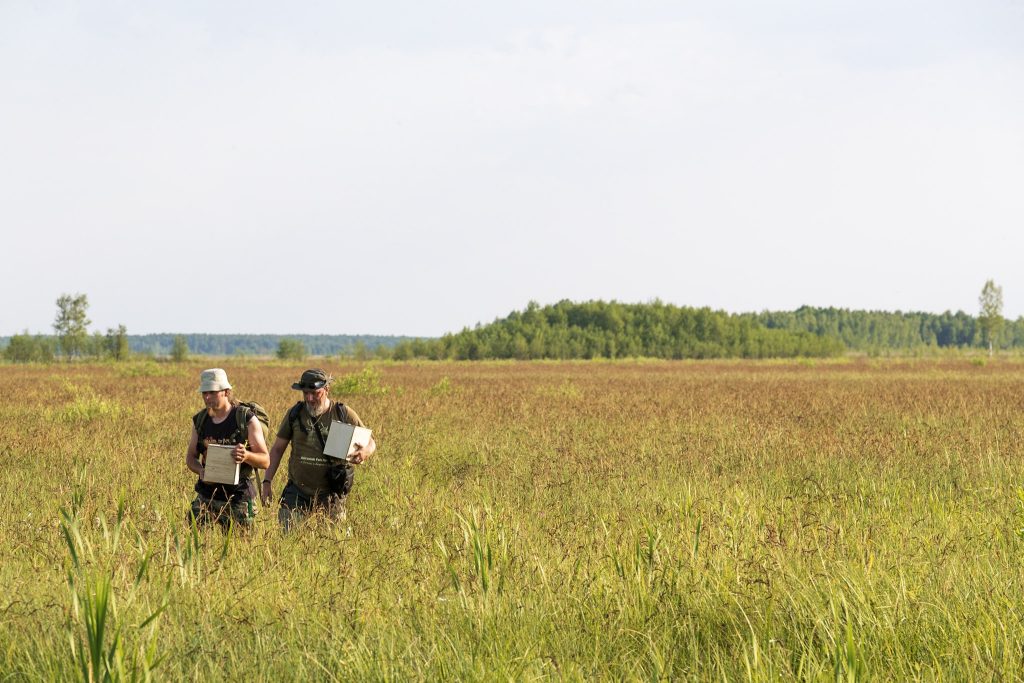 The start
The start
Between this proposal and the decision to join the translocation programme as part of a project run by the BEF called LIFEMagniDucatus-Acrola (which should be translated as Grand Duchy of the Aquatic Warbler) and the planned start of the project, there was very little time left to prepare. A project team at OTOP was appointed and the work took off. As in any such project, even before we set off into the field, it was necessary to adequately plan the activities and obtain the approvals of the relevant conservation administrations. In this case, these were the Ministry of the Environment and Climate, the General Director of Environmental Protection, the Regional Director of Environmental Protection in Białystok, and the Director of the Biebrza National Park. The birds were to be translocated from this park and from the neighboring land, which are social reserves of OTOP, several provinces across, in the Natura 2000 area of Bagna Rozwarowskie.
The applications were submitted, the Code of Administrative Procedure dictated the dates on the calendar, and the team prepared for fieldwork.
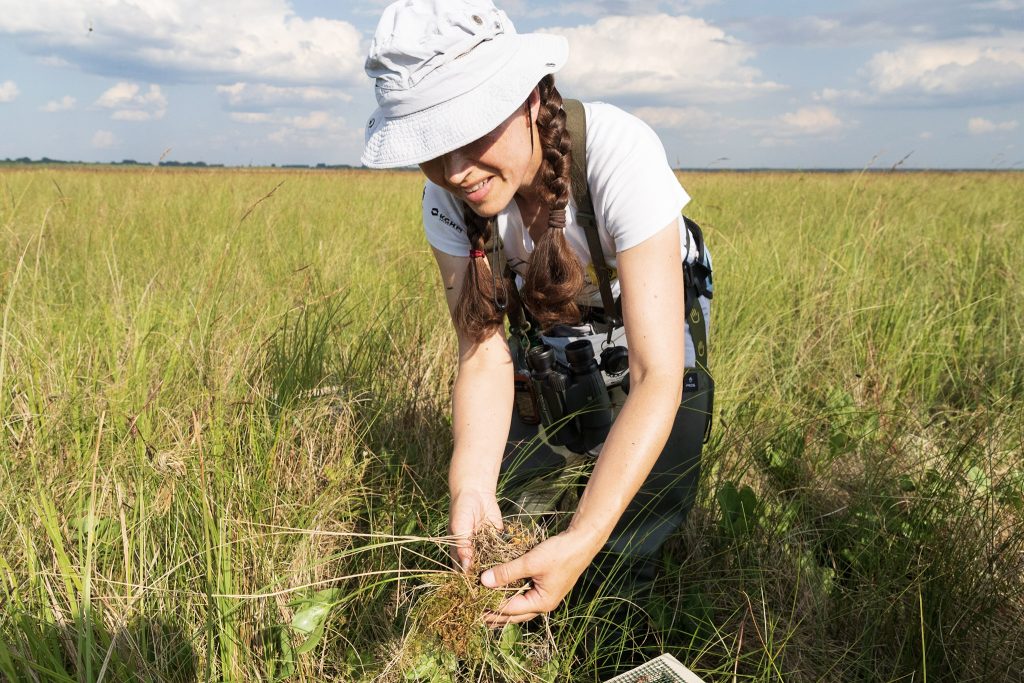 Translocation of chicks of endangered bird species for the conservation of their populations is a well-known practice, framed by the International Union for Conservation of Nature (IUCN) guidelines. The exchange of experience between teams carrying out such work (if only in form of publications and papers at conferences) allows for good planning. We were also able to benefit from the experience of Lithuanian partners and the support of the International Aquatic Warbler Conservation Team. The plan was to search for about 20 Aquatic Warbler nests and then monitor them from detection until the young hatch, and at the right moment – retrieve the nests, prepare them for transport, and transport them to the target location. There, the nestlings would be gradually reared, first indoors and then in field aviaries, where they could become accustomed to the environmental conditions. At the end, there should be a soft release. Sounds good — let’s get on with it!
Translocation of chicks of endangered bird species for the conservation of their populations is a well-known practice, framed by the International Union for Conservation of Nature (IUCN) guidelines. The exchange of experience between teams carrying out such work (if only in form of publications and papers at conferences) allows for good planning. We were also able to benefit from the experience of Lithuanian partners and the support of the International Aquatic Warbler Conservation Team. The plan was to search for about 20 Aquatic Warbler nests and then monitor them from detection until the young hatch, and at the right moment – retrieve the nests, prepare them for transport, and transport them to the target location. There, the nestlings would be gradually reared, first indoors and then in field aviaries, where they could become accustomed to the environmental conditions. At the end, there should be a soft release. Sounds good — let’s get on with it!
Searching for nests
 Based on the expertise of Dr. Justyna Kubacka, a specialist in Aquatic Warbler breeding research, who agreed to lead the nest search team, the team determined the areas to be searched and the work pattern.
Based on the expertise of Dr. Justyna Kubacka, a specialist in Aquatic Warbler breeding research, who agreed to lead the nest search team, the team determined the areas to be searched and the work pattern.
The first day of fieldwork was on the 18th of May, on a chilly morning. After discussing the principles and methodology of the nest search, the OTOP and Biebrza National Park team, led by Dr Kubacka, set off into the field. For the next 2.5 weeks, the search and monitoring of already-found nests continued almost daily. On four study plots visited on consecutive days scientists found about 20 nests in total, and on two further plots, established in the last days of May on OTOP land near Mscichy — a further 3. The nest search consisted of observing the behavior of Aquatic Warblers as the observer walked slowly across the mire. Males are not involved in nest building or care of eggs and chicks, so their monitoring does not allow nest finding. This leaves the females unseen, moving frequently between the vegetation. Spotting a passing bird started a detailed search phase, lasting from tens of minutes to sometimes several hours over successive visits to a given area.
The naturalists observed the females’ flights between the presumed nest location and the foraging area, tried to determine where they returned to, and based on this – the location of the nest. Despite the time spent, it wasn’t always possible to eventually find a nest among the vegetation.
The nests the team had already found were monitored approximately every 2 days – scientists checked whether the female was still present, whether the eggs were in the nest, and when it was time for hatching, monitored when the young appeared in the nests. From that point on, the time started moving quicker as the nests had to be taken when the chicks were about 7 days old. Then, after a short acclimatisation at the project base in Podlasie, they were to be transported to Rozwarów. On one hand, the dates were dictated by the chicks’ ability to survive transportation, and on the other – the age at which they most likely begin to imprint on the geolocation to which they will return from their wintering grounds. This is estimated to begin at 10-12 days of age, so the window for their transportation was quite narrow. When the right moment came, 11 nests were selected with chicks of similar age and size. The nests were collected with the chicks, placed into specially prepared boxes, and transported to the project location. Translocation, especially at this stage, may seem like a drastic conservation method. However, collecting nests, especially during the aquatic warbler’s first breeding period, is not a big problem for the birds. Females treat this as a natural loss (in these areas it affects about 4 out of 10 nests, and many more on the species scale), and their body quickly prepares to build a new nest and repeat the breeding process. The nests were collected during the first days of June, so the birds still had plenty of time to repeat the process.
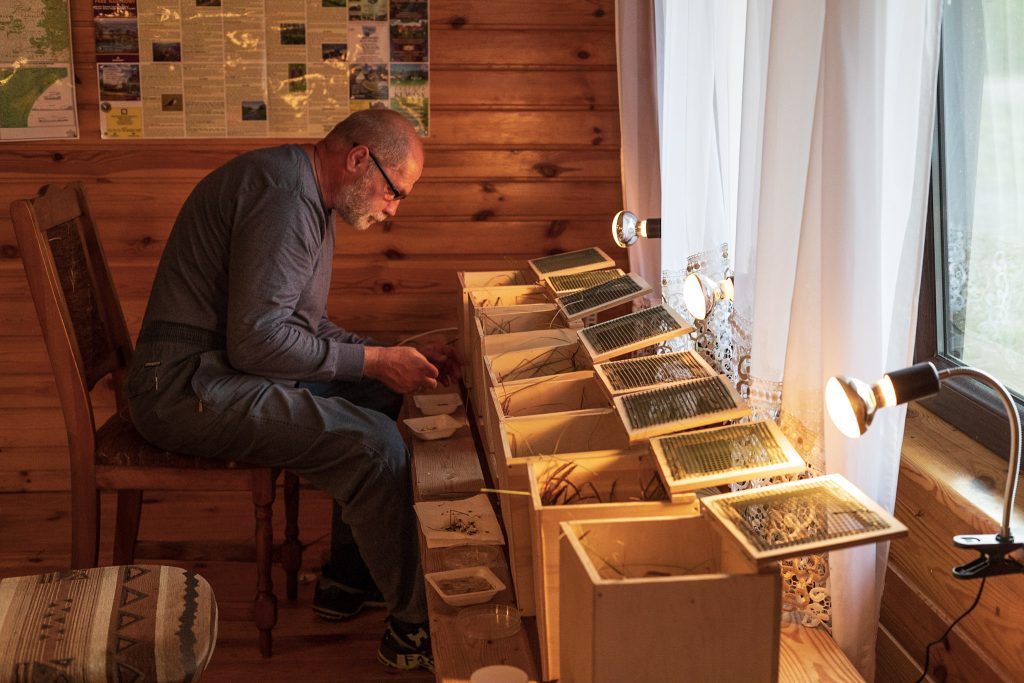 The chicks in team’s hands
The chicks in team’s hands
The project base was located in the Biebrza National Park, at a friendly agro-tourism farm in Gugny, where both the project team and the chicks were accommodated. On site were members of the search team, Krzysztof Kalużny (an OTOP expert in chick care, who manages the OTOP reserve on Karsiborska Kępa daily), partners from the BEF, and volunteers who, from the moment the chicks arrived, took care of their supply of natural food — insects caught by scooping in the surrounding meadows. Anecdotally, large, nutritious flies were obtained using a hoover and a ‘mate’s car’, an extremely effective method that did not require leaving the base. In addition to natural food, whitefly larvae, waxworm larvae, and crickets that were prepared for the chicks, the young birds were fed according to their size and appetite. This was complemented by extensive supplementation, suitable for insectivorous birds. The team’s victualing was no less satisfactory and the meals ordered successfully fulfilled all expectations.
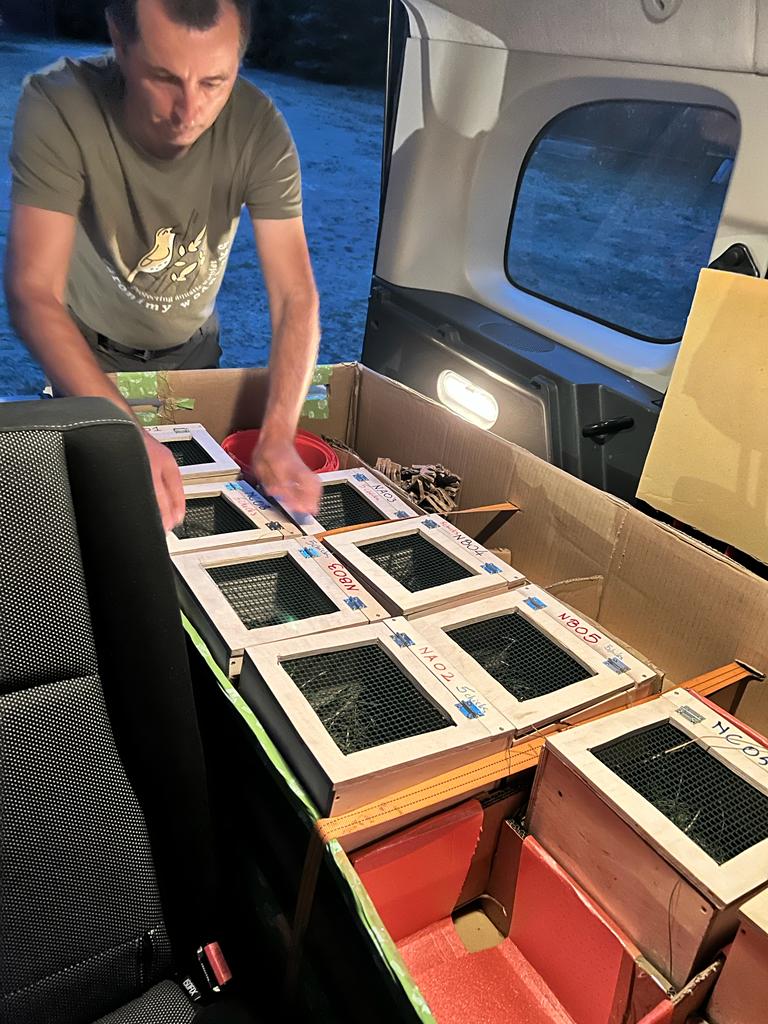 The base hosted representatives of the District Veterinary Inspection in Mońki and the director of the Biebrza National Park.
The base hosted representatives of the District Veterinary Inspection in Mońki and the director of the Biebrza National Park.
The transportation of the chicks took place at night, during their natural resting time. Thanks to the artistry of the driver, it was possible to carry it out without interruption and in time for the first feeding in the morning. At the base camp in Rozwarowo, the project team was welcomed by Małgorzata Mizgalska (project coordinator), and the owner of the farm where we set up the base camp – Mr Alfred Smolczyński – an extremely kind and helpful aquatic warbler enthusiast, and the project partners from Germany.
Translocation map
Raising the chicks
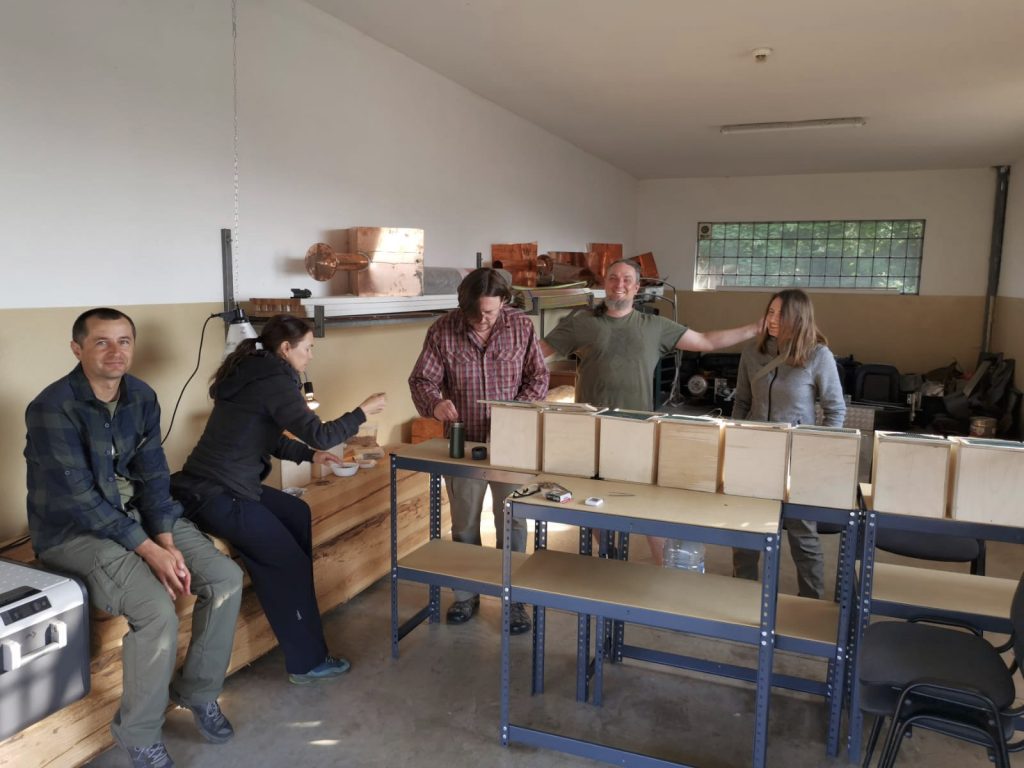 When boxes with chicks were brought into the room, the keepers proceeded to feed them and check their condition, and those of us who had spent the night on the road slowly drifted off for a few hours’ nap.
When boxes with chicks were brought into the room, the keepers proceeded to feed them and check their condition, and those of us who had spent the night on the road slowly drifted off for a few hours’ nap.
The following days were incredibly busy. The intervals for feeding the chicks gradually increased from 20-25 minutes to three-quarters of an hour, so the feeding team had time to leave the room once in a while. Chicks’ health, weight gain, growth, and development were monitored daily. They were cared for 24 hours a day. At the same time, preparations were underway for the cages for the sub-adults and the field aviaries, which had to be brought from a warehouse in Germany, assembled, and placed on the marsh. The operation, initiated by the manager of OTOP’s West Pomeranian reserves, who had brought some of the aviary components to Rozwarowo, was completed after a week of struggling with the matter. It cost many hours, three kilograms of screws, and some one hundred thousand steps across the dusty floor of the reed hangar at Mr Smolczynski’s farm.
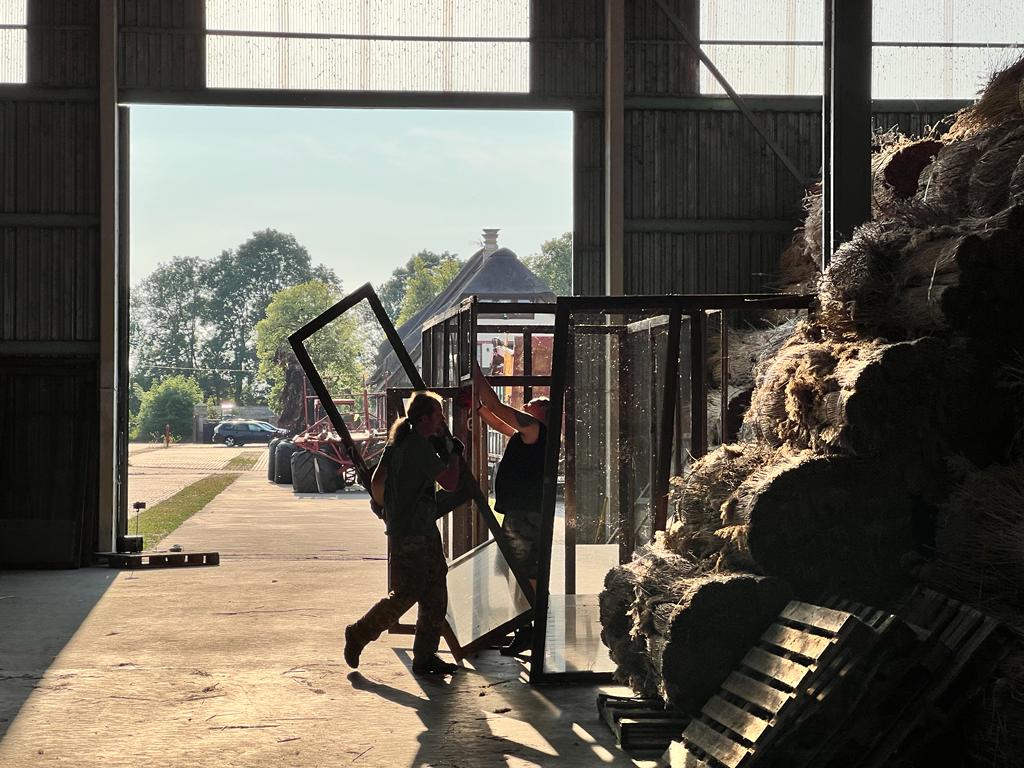 For some time, the team caring for the chicks faced adversity, which came down to us in the form of illnesses among the chicks. Although we knew this could happen with a group of more than 50 birds, we hoped these problems could be avoided. Unfortunately, wildlife remains that way even if you lock it away for a while under even the most controlled circumstances. In all likelihood, an environmental fungal infection, which was unavoidable given that we were working with a bog-nesting species, occurred in the weakest chicks. It has to be stressed that with such activities this is not an unexpected event and risks must always be taken into account. We provided the aquatic warblers with expert care and experienced veterinarians, tightened sanitation, and fought back.
For some time, the team caring for the chicks faced adversity, which came down to us in the form of illnesses among the chicks. Although we knew this could happen with a group of more than 50 birds, we hoped these problems could be avoided. Unfortunately, wildlife remains that way even if you lock it away for a while under even the most controlled circumstances. In all likelihood, an environmental fungal infection, which was unavoidable given that we were working with a bog-nesting species, occurred in the weakest chicks. It has to be stressed that with such activities this is not an unexpected event and risks must always be taken into account. We provided the aquatic warblers with expert care and experienced veterinarians, tightened sanitation, and fought back.
Rozwarowo was visited by representatives of the District Veterinary Inspection in Kamień Pomorski (this was the second of the scheduled inspections required by law), representatives of the Wolin National Park, as well as project partners from Germany and Lithuania, who grabbed buckets in their hands and helped to supply the chicks. We were supported by volunteers, who spent many hours with entomological scoops on the surrounding meadows, gathering food for the aquatic warblers. We also hosted several people from the village community and organised a meeting for anyone interested in the area. Dr Justyna Kubacka also came to the base to ring the chicks. Each of the 49 aquatic warblers we released wears a metal ring and a red plastic ring with a black number. If you see them anywhere — let us know!
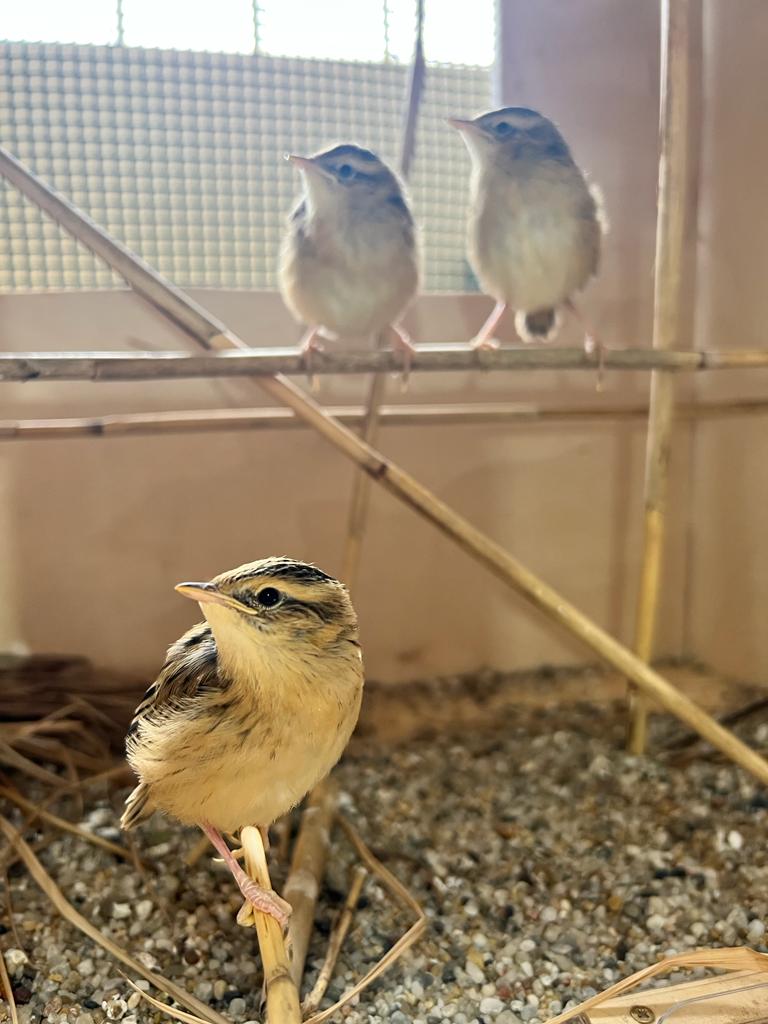 The chicks gradually learned to devour larger and more mobile prey. Their ability to hunt caged, live prey and their attempts to fly were a sign that they could cope in the field aviaries. The chicks were constantly supervised by a keeper, including at night when someone from the team was in the field base nearby. An anti-predator fence surrounded the aviaries. There was no flooring, so there was natural vegetation among which the young aquatic warblers could bushwalk, hide, and hunt for the live food provided.
The chicks gradually learned to devour larger and more mobile prey. Their ability to hunt caged, live prey and their attempts to fly were a sign that they could cope in the field aviaries. The chicks were constantly supervised by a keeper, including at night when someone from the team was in the field base nearby. An anti-predator fence surrounded the aviaries. There was no flooring, so there was natural vegetation among which the young aquatic warblers could bushwalk, hide, and hunt for the live food provided.
Soft release, or soft release into the environment
Finally, a few days after being allowed into the aviaries, the big, eagerly awaited moment came when the birds had acclimated to their surroundings. The special windows, so far protected by a fine mesh like the rest of the structure’s walls, were replaced with large mesh panels, allowing the aquatic warblers to fly out. This happened very quickly, and by the time we had finished replacing the windows in the last of the 11 aviaries, the aquatic warblers from the first ones were already in the surrounding vegetation.
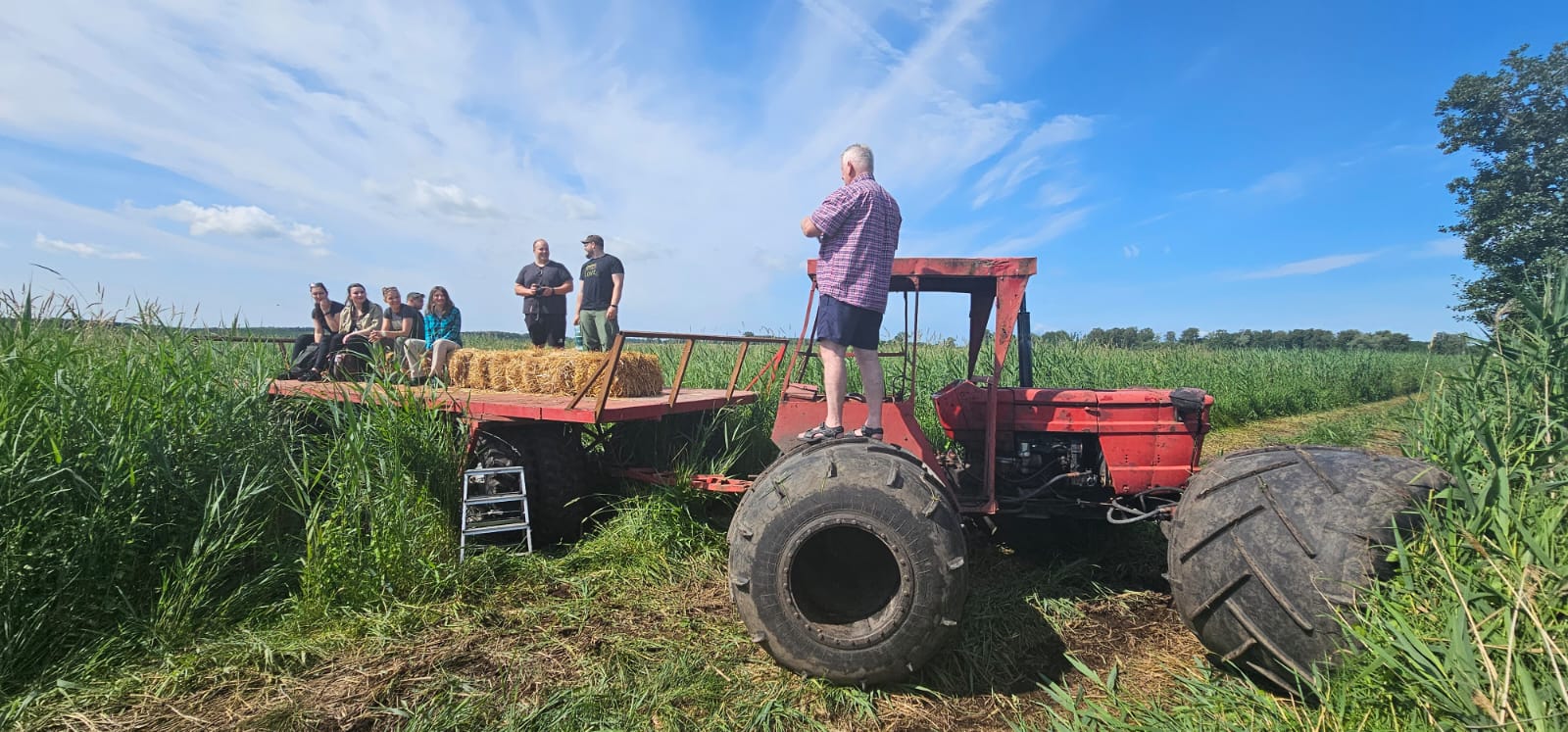 In the first few hours, more than 30 birds flew out, and by the evening all of them had left the aviaries at least once. They continued to return in the following days, which was captured on photo-traps. They also foraged around, using insects supplied to them earlier as live food. Gradually, the aquatic warblers started dispersing for breeding and we took apart the field base, cleaned up the place where the birds stayed in the cages, and stored the equipment for next year, thanks to the kindness of Mr. Alfred Smolczyński, who provided us with a storage place.
In the first few hours, more than 30 birds flew out, and by the evening all of them had left the aviaries at least once. They continued to return in the following days, which was captured on photo-traps. They also foraged around, using insects supplied to them earlier as live food. Gradually, the aquatic warblers started dispersing for breeding and we took apart the field base, cleaned up the place where the birds stayed in the cages, and stored the equipment for next year, thanks to the kindness of Mr. Alfred Smolczyński, who provided us with a storage place.
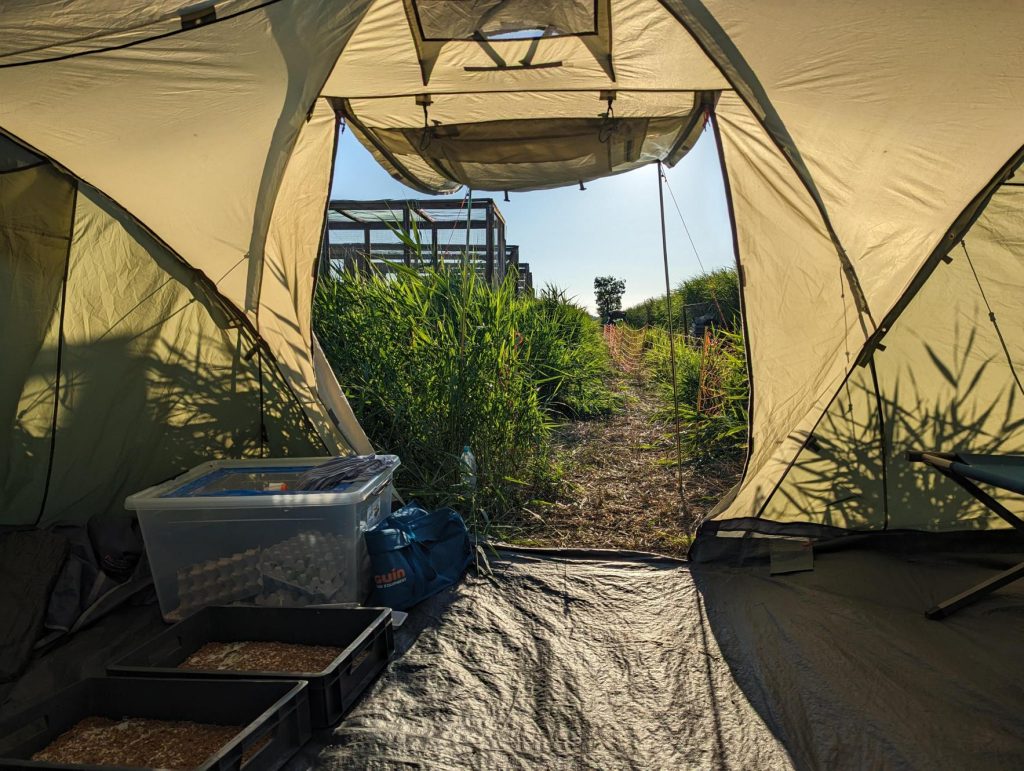 The project team also began returning to their homes after many days of work. It took seven weeks from the start of the nest search to the opening of the aviaries. The team was fortunate — the conditions were good, offering cool but sunny weather at the beginning, which was perfect for fieldwork. Later, warmth and lack of anomalies made it easier to rehome the aquatic warblers. The core of the project team from the OTOP side was four people working on-site, supported by two more from BEF, and many volunteers scrolling through the work. The conservationists met with great kindness from a multitude of people and a warm welcome from the Rozwarowo community. The project sometimes required commitment at all levels, quick actions, and decisions. And the team succeeded!
The project team also began returning to their homes after many days of work. It took seven weeks from the start of the nest search to the opening of the aviaries. The team was fortunate — the conditions were good, offering cool but sunny weather at the beginning, which was perfect for fieldwork. Later, warmth and lack of anomalies made it easier to rehome the aquatic warblers. The core of the project team from the OTOP side was four people working on-site, supported by two more from BEF, and many volunteers scrolling through the work. The conservationists met with great kindness from a multitude of people and a warm welcome from the Rozwarowo community. The project sometimes required commitment at all levels, quick actions, and decisions. And the team succeeded!
The warblers have flown off to their wintering grounds. So far, we have received
news from one ringing point in France, which is on the birds’ migration route to the wintering grounds. We are keeping our fingers crossed for a good journey to and from Africa and will be looking out for them next season.
A video film about translocation of Aquatic Warbler in Poland


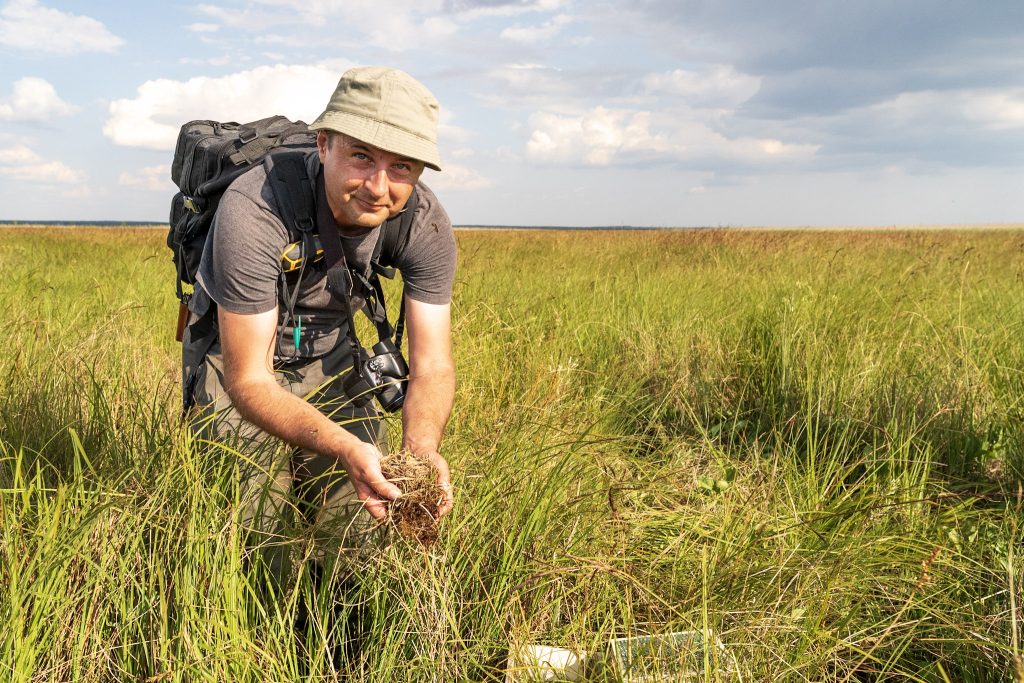
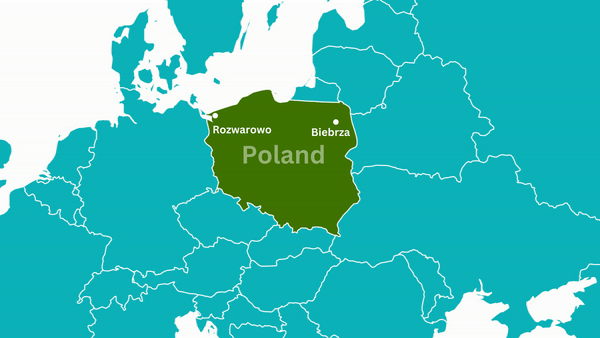
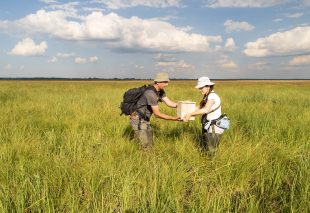


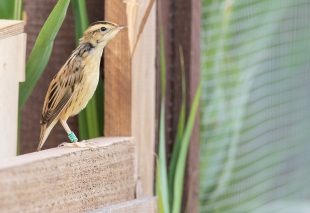
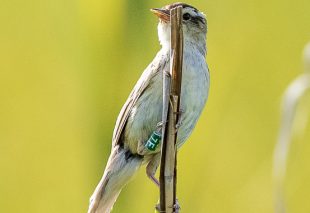


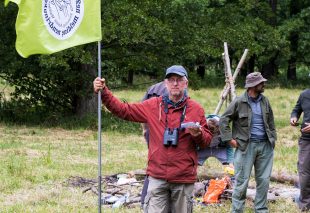


No comments!